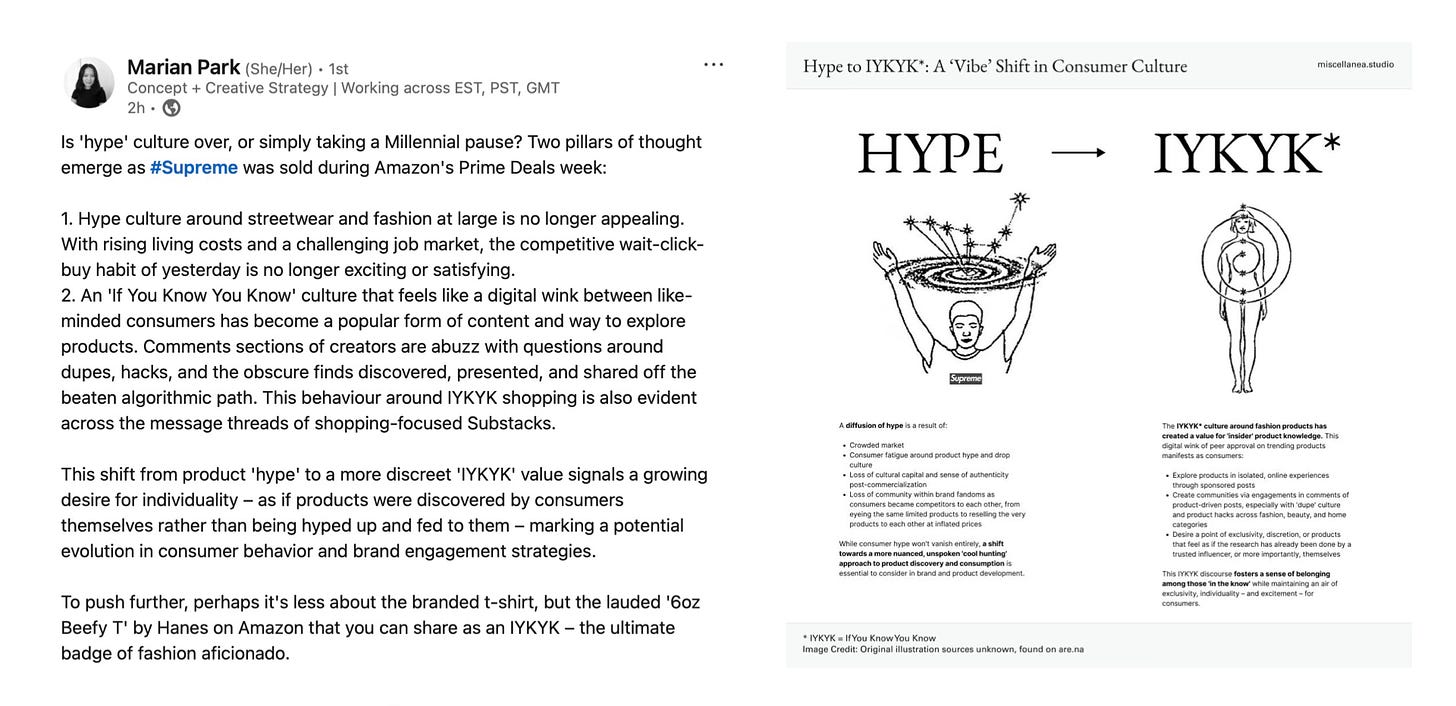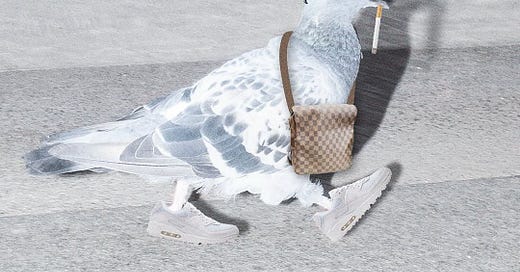Trendy Trends
Never before in history has newness attained hit status while generating so little cultural impact.
cover image: Parisian pigeon by Robin Lopvet
Written during the Nazi regime by philosopher and cultural critic Walter Benjamin, The Work of Art in the Age of Mechanical Reproduction essay (1935) examines the role of technological reproduction in the decline of autonomous aesthetic experience. A few decades later, the television series Ways of Seeing developed the themes of Benjamin's essay in its first episode, broadcast on BBC Two (1972). The 30-minute film created by writer John Berger established that transforming a work of art into a commodity through artistic production and reproduction has destroyed the aesthetic, cultural, and political authority of art: “For the first time ever, images of art have become ephemeral, ubiquitous, insubstantial, available, valueless, free.”
The same process is happening with fashion, beauty, interior design, luxury, and countless more industries impacted by the effect of trends, which act as the (re)production process under which creative propositions become commodities. If you have received my portfolio of services or read my website, “trends intelligence” is the first consultancy product I sell to help businesses future-proof their strategies. But “trends,” from Old English and of Germanic origin “trendan” to initially designate ‘revolve, rotate,’ have depleted their target areas of application of their aesthetic, cultural, and political authorities. And I’m not aligned with the shift.
The making of our cultural artefacts, taking the form of conspicuous goods, has become a champion of a nothing-new mentality. The proliferation of neo- and -core pre- and suffixes acting as quick fixes and as a tendency for new cultural movements and communities to dub themselves as post-something, presuming to have evolved from the past, is exhausting. In reality, “there’s nothing new under the sun […] Nowadays, we no longer invent originals, we introduce pre-existent relics — which is a tautology, a constant repetition. The compulsive desire to repeat is the relentless reality we live in. It minimizes agitation in the hopes of moulding a story that leads to a novel way of living (and dressing)” stated 032c’s 43rd issue Culture Crisis. Therapies for the confused. in Summer 2023.
Our culture lives by the era of remixes, remakes, dupes, and reboots to repost, review, and reproduce. The meme machine is endless. The aesthetic, cultural, and political authority of trend production is destroyed. Brands’ and consumers’ obsession with nostalgia, openly satisfied through the rejuvenation of past trends, or induced by the neo- and post- prefixes acting towards the endless reproduction of trends, is just a pull-and-play preservation strategy. A self-mythologization attempt to bring the rhetoric of “invention” back to life. A death drive in which culture’s material history gets unpacked as a way to avoid irrelevance. A back-in-time move, translating a desperation to survive. Because nothing is new, except what has been forgotten.
Last year, I was discussing beauty trends with culture writer Sophia June when she pointed out the apparent talent celebrities are gifted with when “creating beauty trends, really micro beauty trends, all the time by just naming what they have been doing.” Blueberry milk nails? “That's just blue nail polish,” explained Sophia. Reverse shopping — as per Decathlon’s renaming strategy to Nolhtaced in 2022? The trendy trend version of a second-hand shop.
The blueberry milk nails and reverse shopping trendy trends fall under the concept of dynamic nominalism. Theorised by Canadian philosopher Ian Hacking as opposed to static nominalism, dynamic nominalism supposes that once assigned a label, an individual inherits all the social and cultural characteristics associated with it. Trends are trends when assigned a name. Because nothing is new, until it is labelled.
New stuff is constantly being labelled to give the impression of being invented, and the production process behind the trends that generate newness just doesn’t fit into reliable cultural narrative structures. Of course, counter-tactics extolling an anti-trend philosophy flourish. As per Birkenstock’s 2022 campaign’s tagline “Hype is not a material we use,” Patagonia’s 2024 catchphrase “Fashion is none of our business,” and Isamaya Beauty’s rebellious anti-trendy-cuteness aesthetics; in those cases, newness embraces a new framework for potential cultural impact, disconnected from hype and trendy trends.

Trends should not be dead. They are time markers and makers. The relationship between trends, culture, and society is reciprocal: trends are witnesses of our socio-cultural movements, and also get charged with cultural value as our societies evolve. But trendy trends are ubiquitous, disposable, ephemeral, insubstantial, and valueless. Never before in history has newness attained hit status while generating so little cultural impact.
Dear brands, you are cultural makers and even cult makers. Trendy trends should not drive aesthetic, cultural, and political authority. Cultural impact should.





This is some seriously good stuff thanks so much for putting it all together.